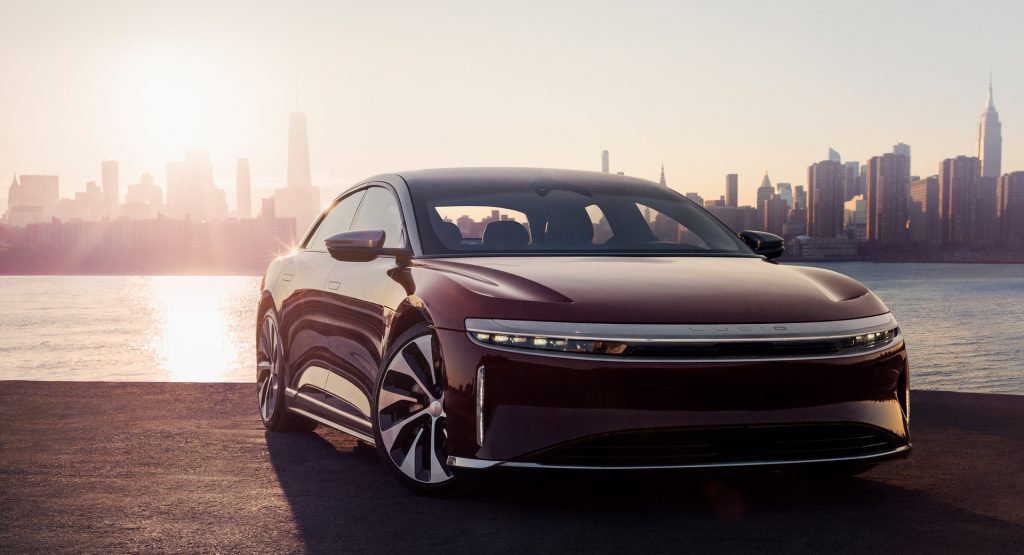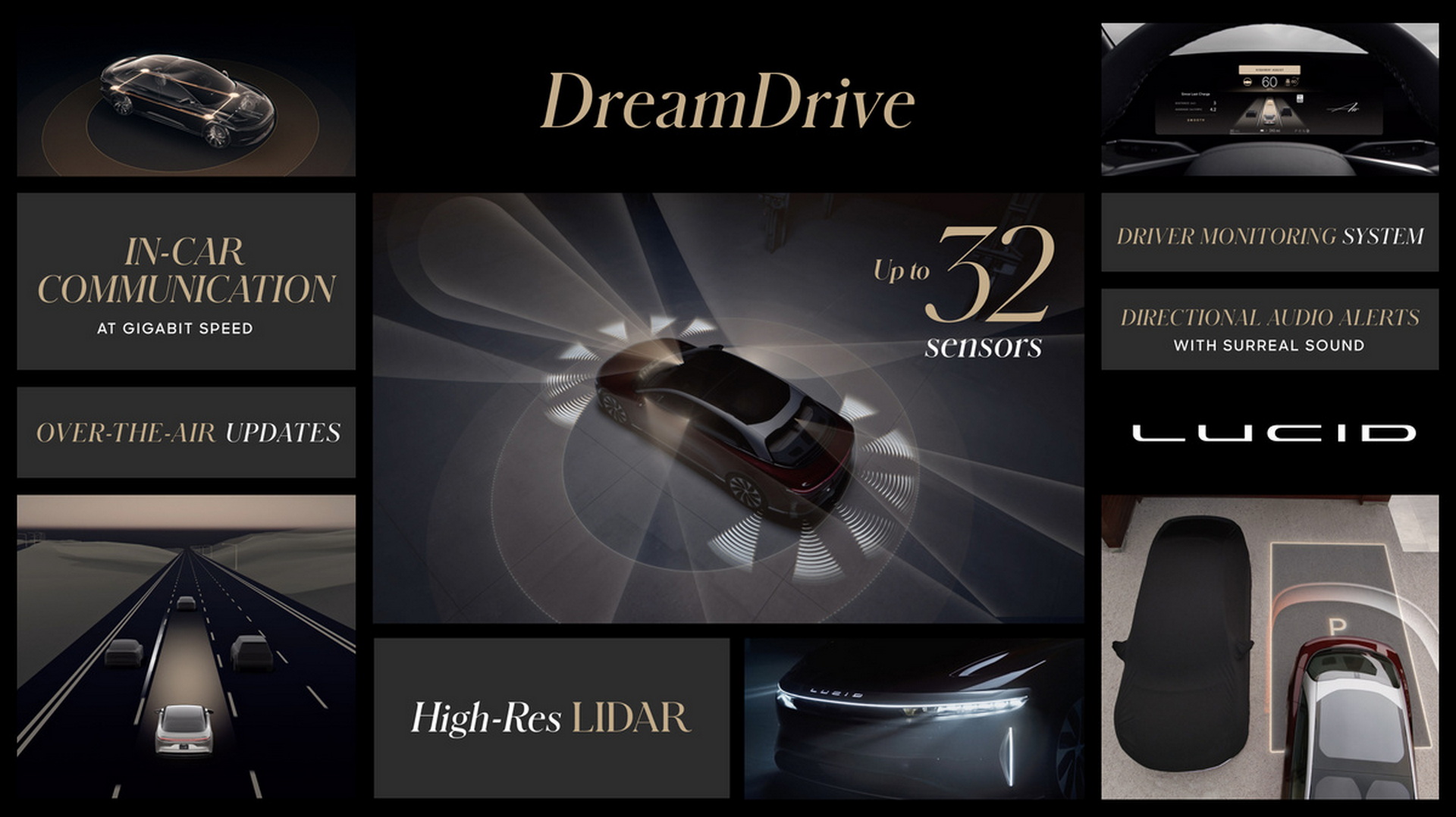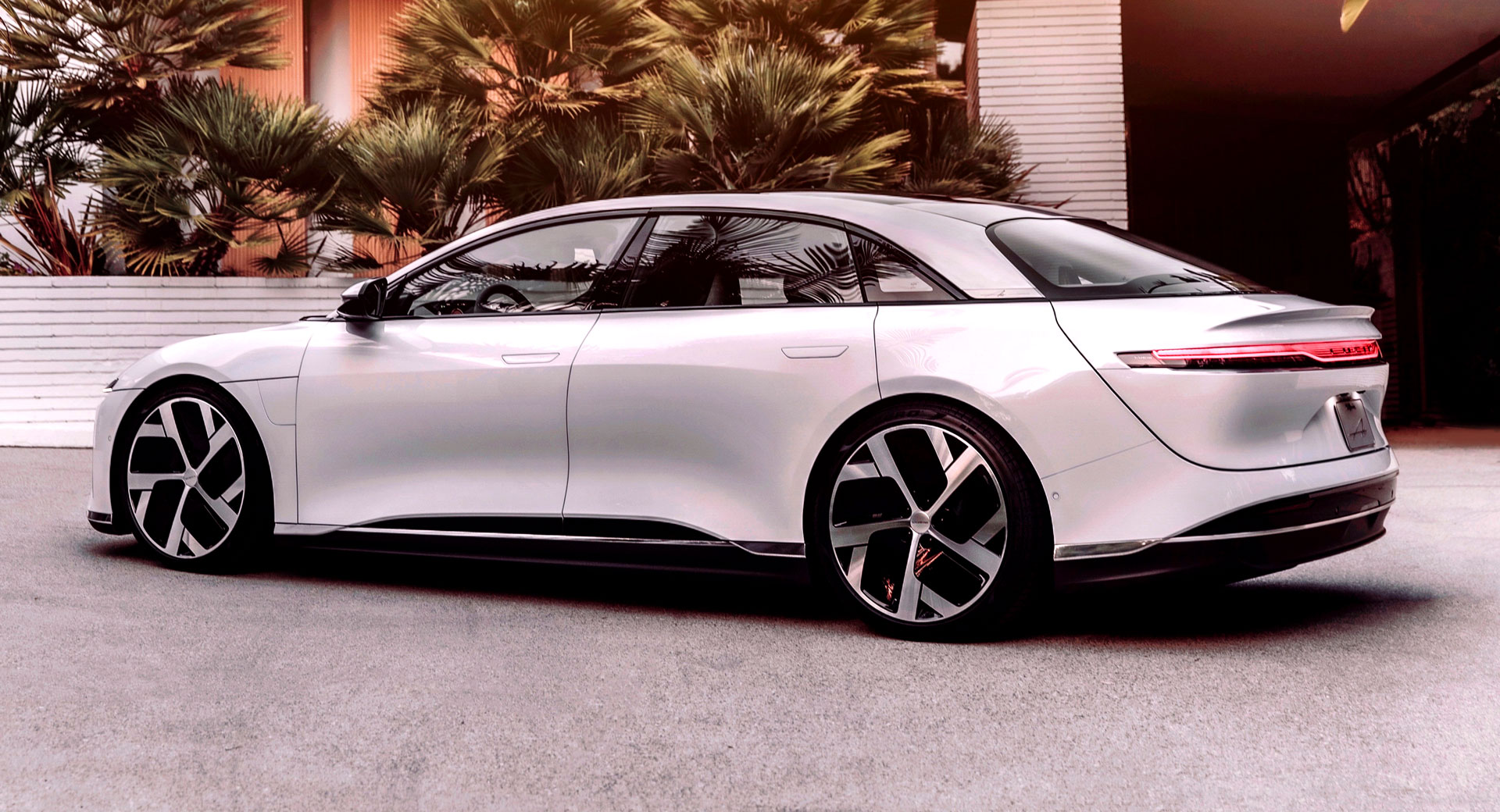Lucid has revealed that its DreamDrive Pro advanced driver-assistance system will continue to improve and add new features over time.
The electric car manufacturer’s hardware and software suite of semi-autonomous technologies runs on the Nvidia Drive platform and uses Nvidia’s advanced Drive Hyperion technology. Lucid notes that the software stack from Nvidia will allow for regular over-the-air software updates
Lucid’s flagship DreamDrive Pro system has no less than 32 sensors, consisting of 14 cameras, 1 lidar, 5 radars, and 12 ultrasonic units. The automaker notes that its proprietary “Ethernet Ring” also provides for a high degree of redundancy for key systems such as braking, steering, and various key sensors.
Read More: Lucid’s LiDAR-Based DreamDrive Pro Is Cheaper Than Tesla FSD In The US, More Expensive In Canada
“The seamless integration of NVIDIA’s software-defined compute architecture and DRIVE OS provides a powerful basis for Lucid to further enhance what DreamDrive can do in the future – all of which can be delivered to vehicles over the air,” senior vice president of digital at Lucid, Michael Bell, said in a statement. “This can benefit every facet of the DreamDrive Pro experience.”
“Lucid and NVIDIA are working closely to create highly programmable, intelligent vehicles,” added vice president of automotive at Nvidia, Rishi Dhall. “By developing on NVIDIA DRIVE, Lucid can deliver safe electric vehicles that are future-ready, with a customer experience that continues to get better and more capable with each software update.”
In February, Lucid announced that its flagship DreamDrive Pro system will cost $9,000 in the U.S. This system expands on the standard DreamDrive and adds adaptive cruise control, automated emergency braking, lane-departure protection, front and rear cross-traffic protection, traffic sign recognition, and traffic drive-off alert.





